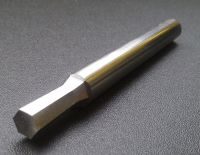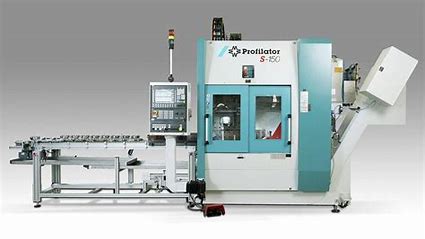Polygon Improves Process for Medical Implant Broaching

Innovation in orthopedic medical implants continues to improve. As a result, manufacturing processes required to make those parts are adapting. Polygon Solutions Inc. manufactures rotary broach cutting tools for the precision machining industry, and is expanding their product line to include innovative tools used for machining orthopedic implants.
The most well-known orthopedic implant is likely the bone screw. Bone screws have typically been made from materials that can resist various forms of bio-corrosion. Stainless steel and titanium have been popular metal materials. Although research continues into more organic materials and coatings, titanium is very popular and this presents certain challenges to machining.
Machining the outside contour of the titanium screw and the threads is a turning operation, and has been addressed quite well by the tooling industry and innovative thread whirling tools. However, adding the hole for a screw driver is still challenging, and early broaching technology is constantly revisited. Once the domain of rotary broaching tools, pecking and shaping type operations are becoming more popular.
The latest advancement is to use a standard rotary broach without the rotary broaching tool holder. The broach is locked into position using a tool holder or collet, and pecked or punched into the part’s pilot hole in small increments. If the chip accumulation begins to interfere with broaching, the broach can be removed, the chips drilled out, and then the broach can be brought back into the hole and broaching can resume.
Removing the broach using a rotary broach holder would have been ineffective, because the holder does not have an alignment feature. Although a broach brake or dog could be used to hold alignment, bone screws are typically small parts made in smaller machines where tooling in the work envelope must be minimized.
The broach material of choice for this type of broaching is M-42 high speed steel. Cobalt and higher hot hardness give the tool more advantages over other broach materials such as M-2, PM M-4 and PM T-15. TiN coatings are also popular upgrades to improve tool life.
Finally, the hexagon form is still the most popular. The hexagon removes a smaller amount of material in the corners of the pilot hole than a square or hexalobular form. However, sometimes due to depth of hole, or need to broach full form without an oversize pilot hole, or large hex sizes, broaching is unsuccessful due to excessive pressure.
In this case the punch broach can form a rectangle 1/3 the hexagon form. After broaching the first rectangle, the part (or possibly the broach) can be rotated sixty degrees and broached again. After repeating one more time, a hexagon has been created without the force required to punch full form.





